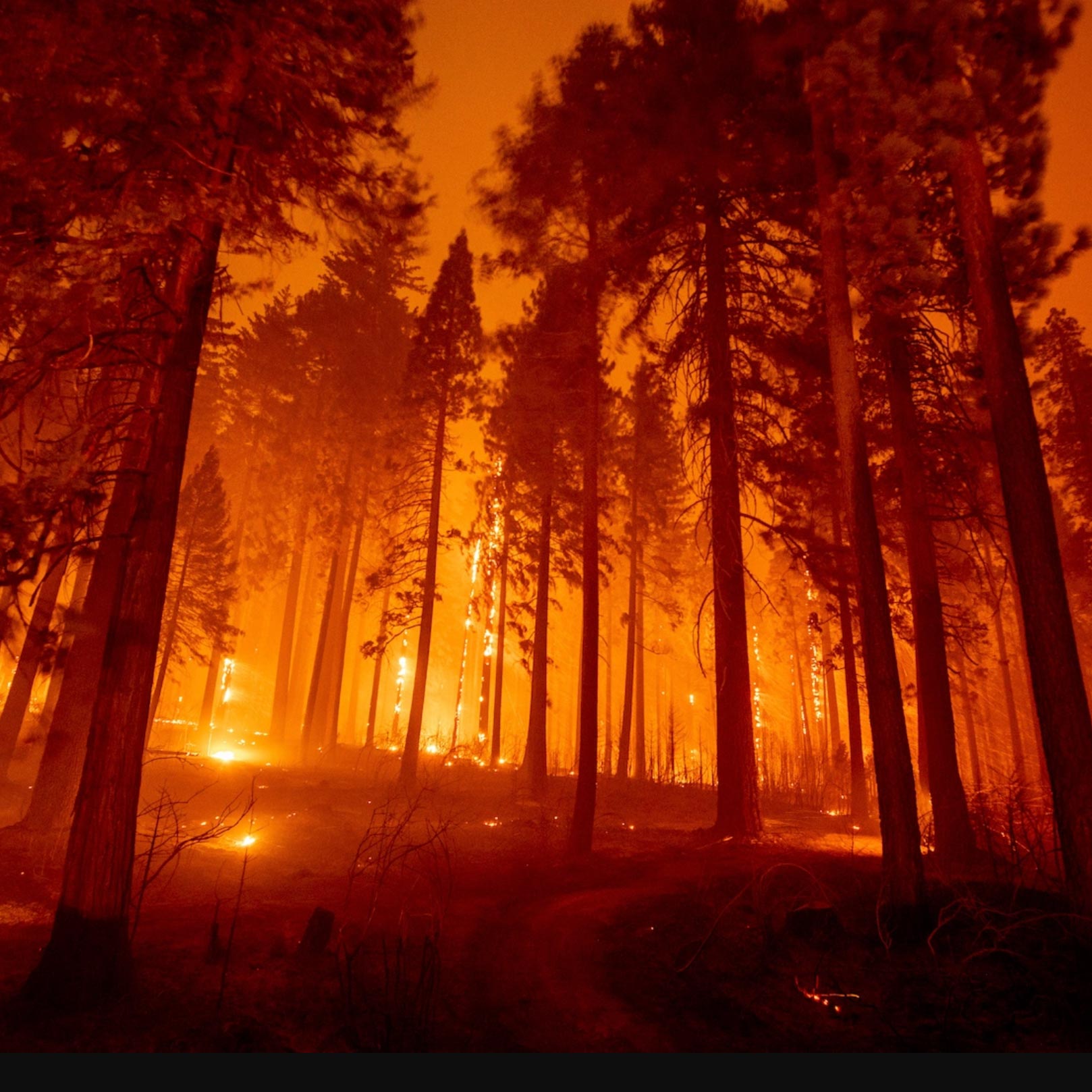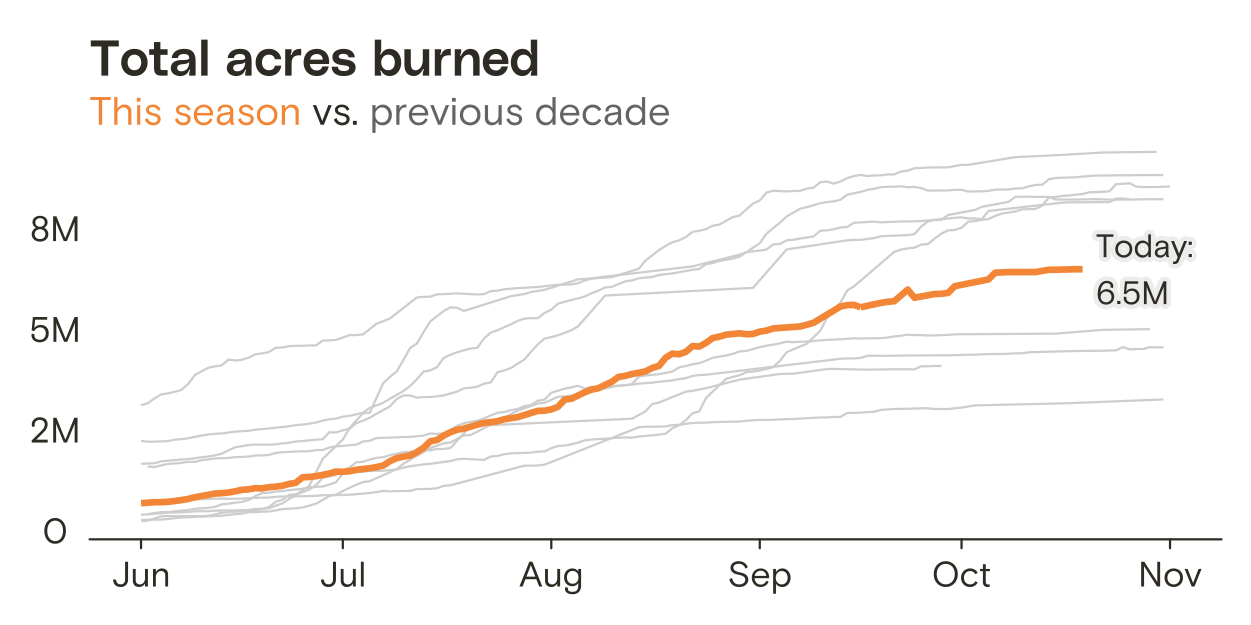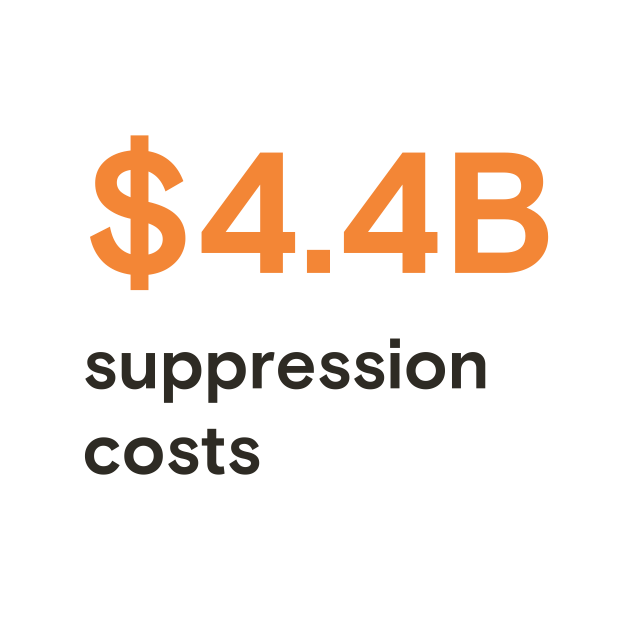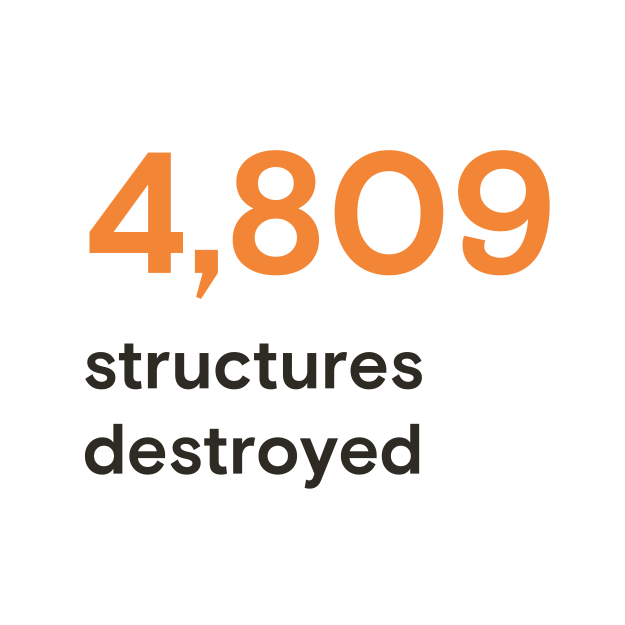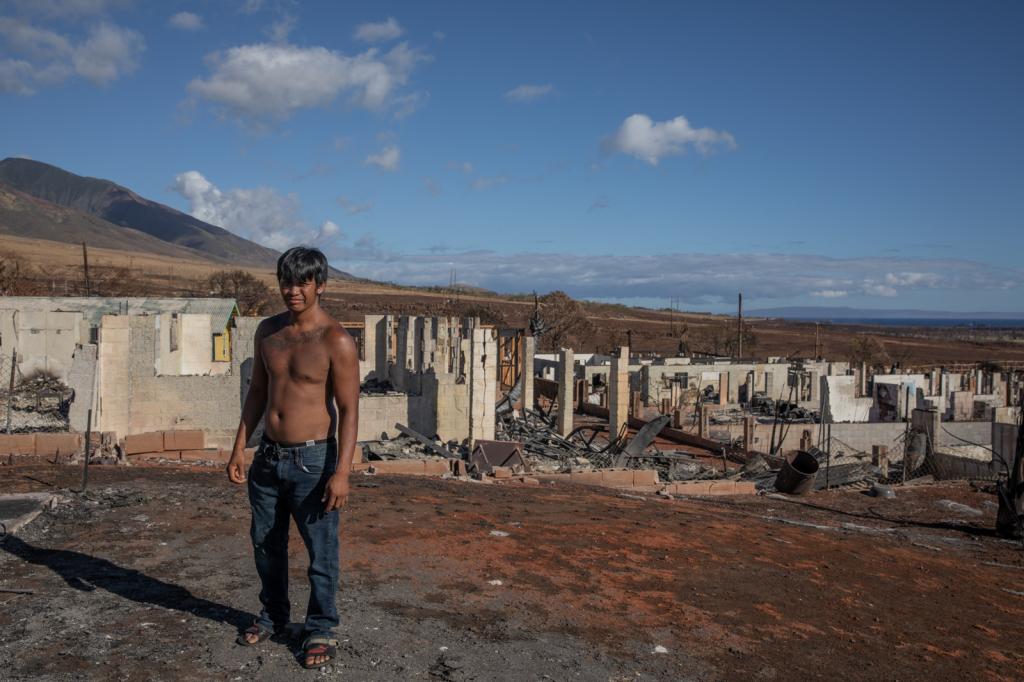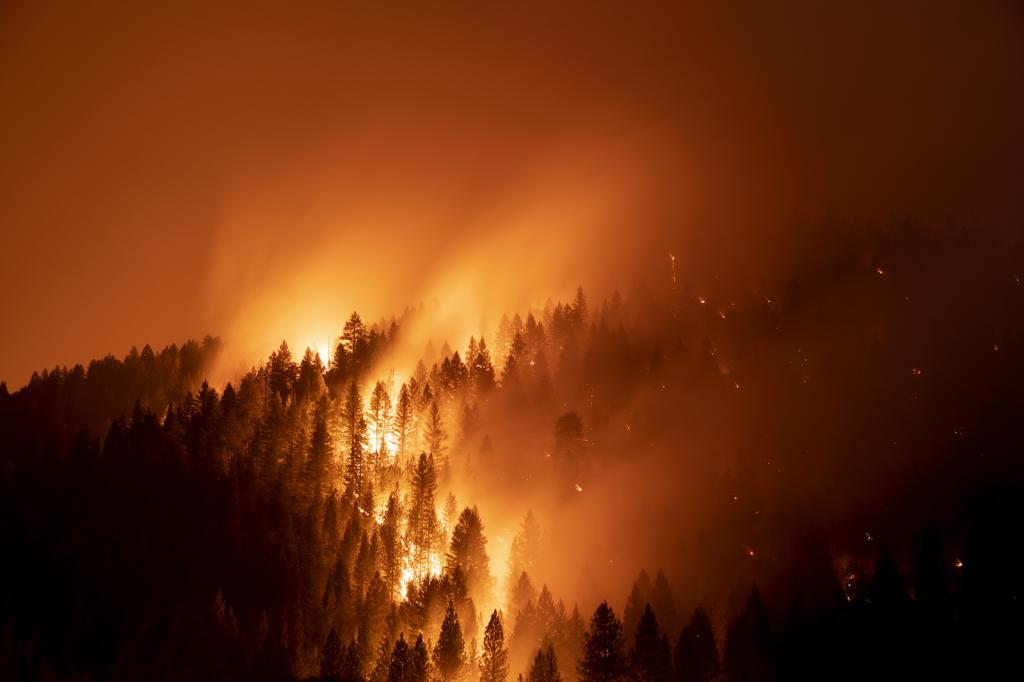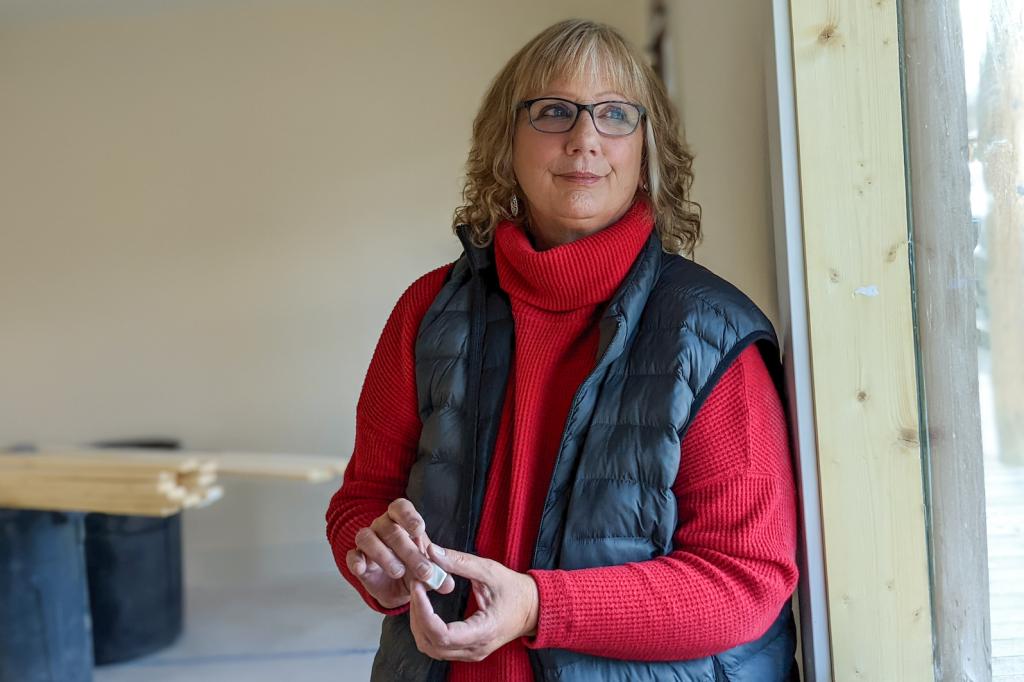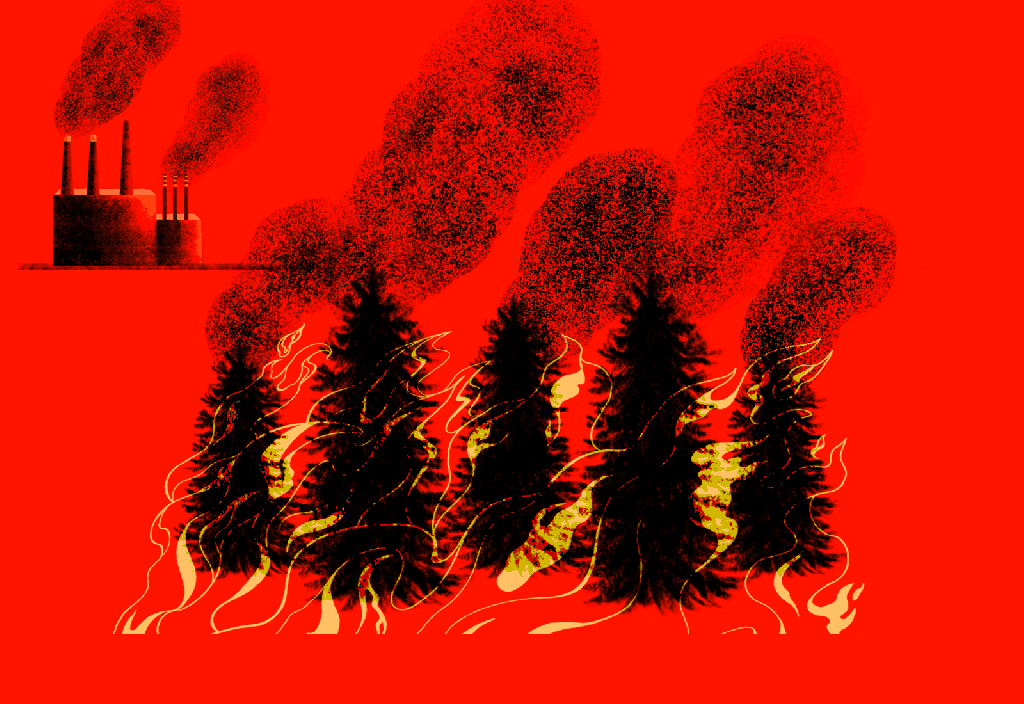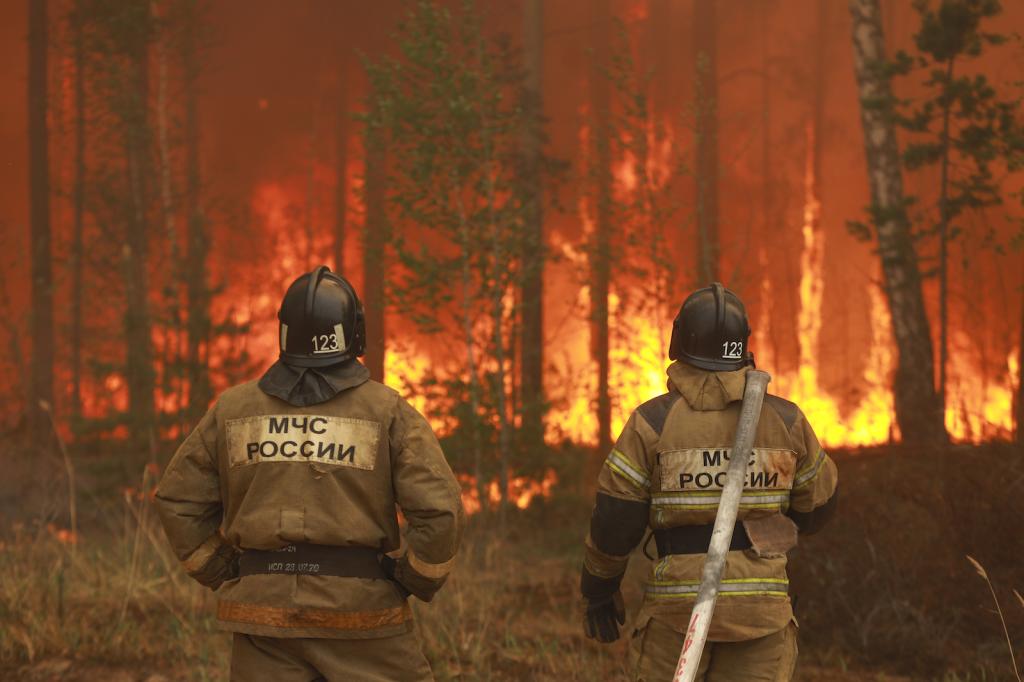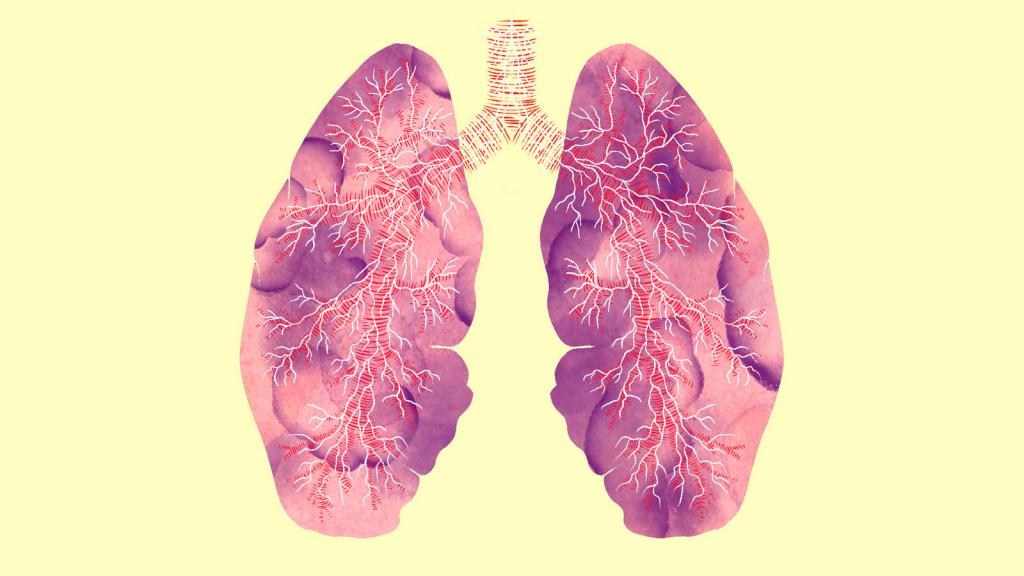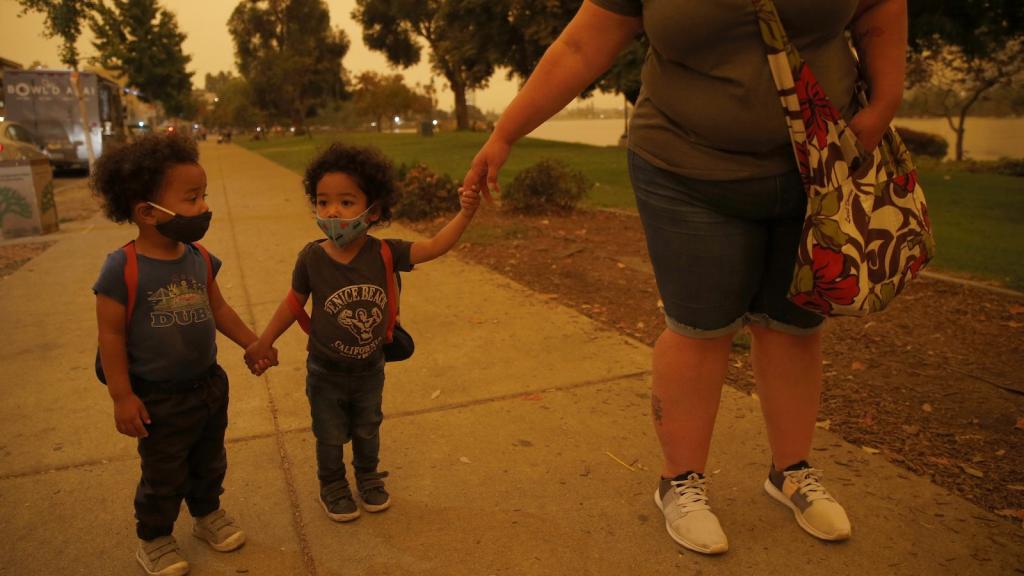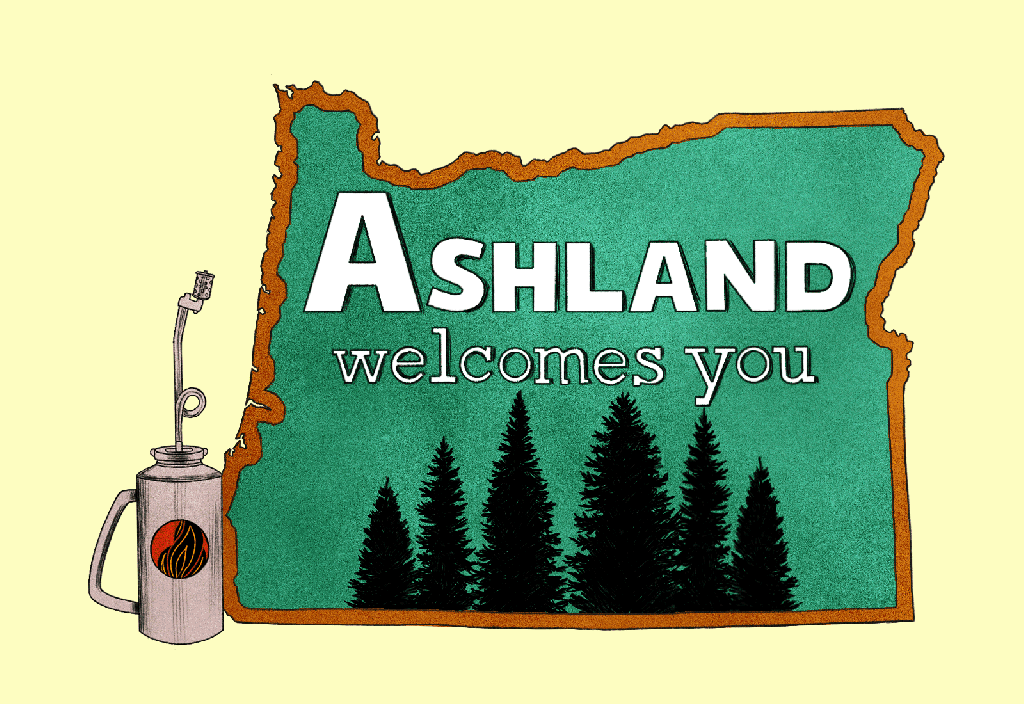The Burning Issue
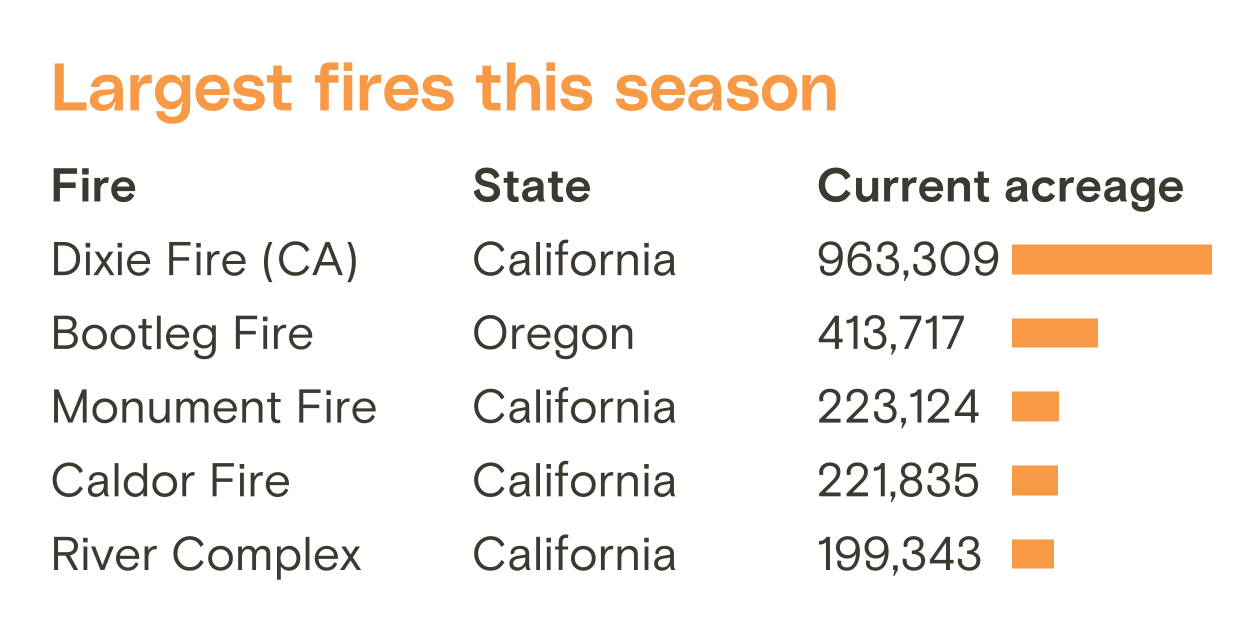
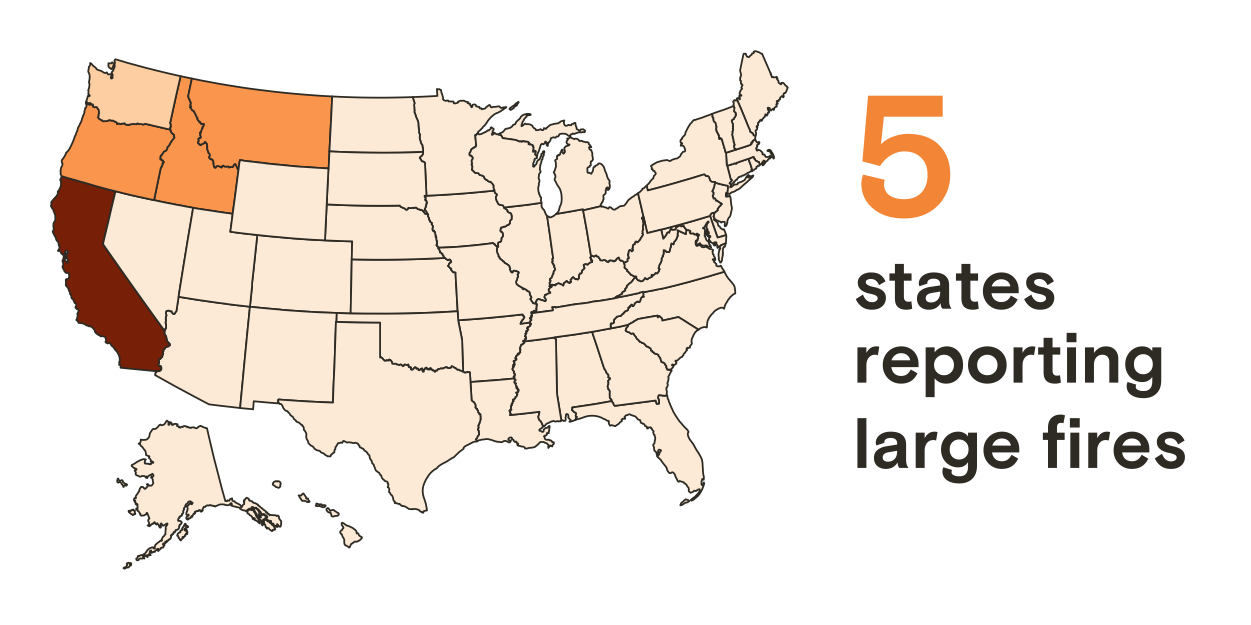
Wildfire season in North America has gotten progressively more intense over the past few decades, lasting longer and burning nearly 10 times as many acres as it did just 30 years ago. As these disasters worsen, we’ve seen fires reshape communities and economies across the U.S. West. Follow Grist as it delves into all aspects of the 2021 fire season — and sign up for our weekly newsletter.
In This Series
-
Even the bayous of Louisiana are now threatened by wildfires
In just one month, 7 times more acres burned than in an average year.
-
On Maui, returning home means confronting toxic risks
A growing body of research shows that wildfires leave a trail of dangerous chemicals behind.
-
Fire is responsible for a quarter of US forest loss since 2021
Forests worldwide are feeling the fiery effects of climate change.
-
A wildfire may have forever changed this Colorado community — and who can afford to live there
How climate-fueled fires are exacerbating the housing crisis sweeping the West.
-
California is banking on forests to reduce emissions. What happens when they go up in smoke?
How faulty rules and wildfire could unravel California’s climate progress
-
You thought the U.S. fire season was bad. Russia’s is much worse.
Emissions from Siberia’s fires are more than Germany’s total annual greenhouse gases.
-
A deadly fungal disease on the rise in the West has experts worried
Researchers haven’t pinned down exactly what’s behind the rise in Valley fever cases or how to stop it. One thing is nearly certain, though: Climate change plays a role.
-
Wildfire smoke claims more than 33,000 lives each year, new study finds
And that number doesn't even account for long-term exposure.
-
How one town put politics aside to save itself from fire
Timber Wars tore this town apart. Wildfire prevention brought it back together.
